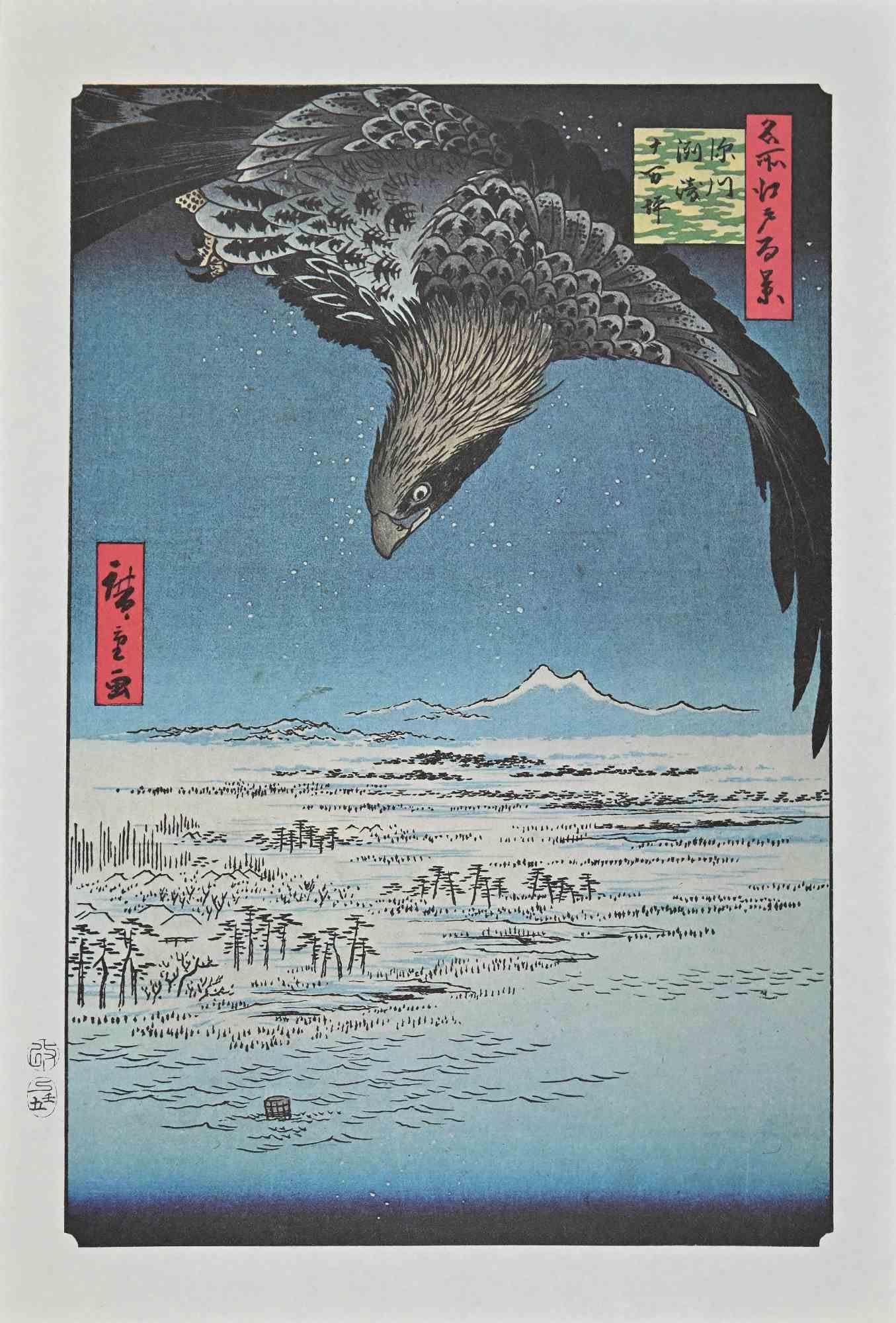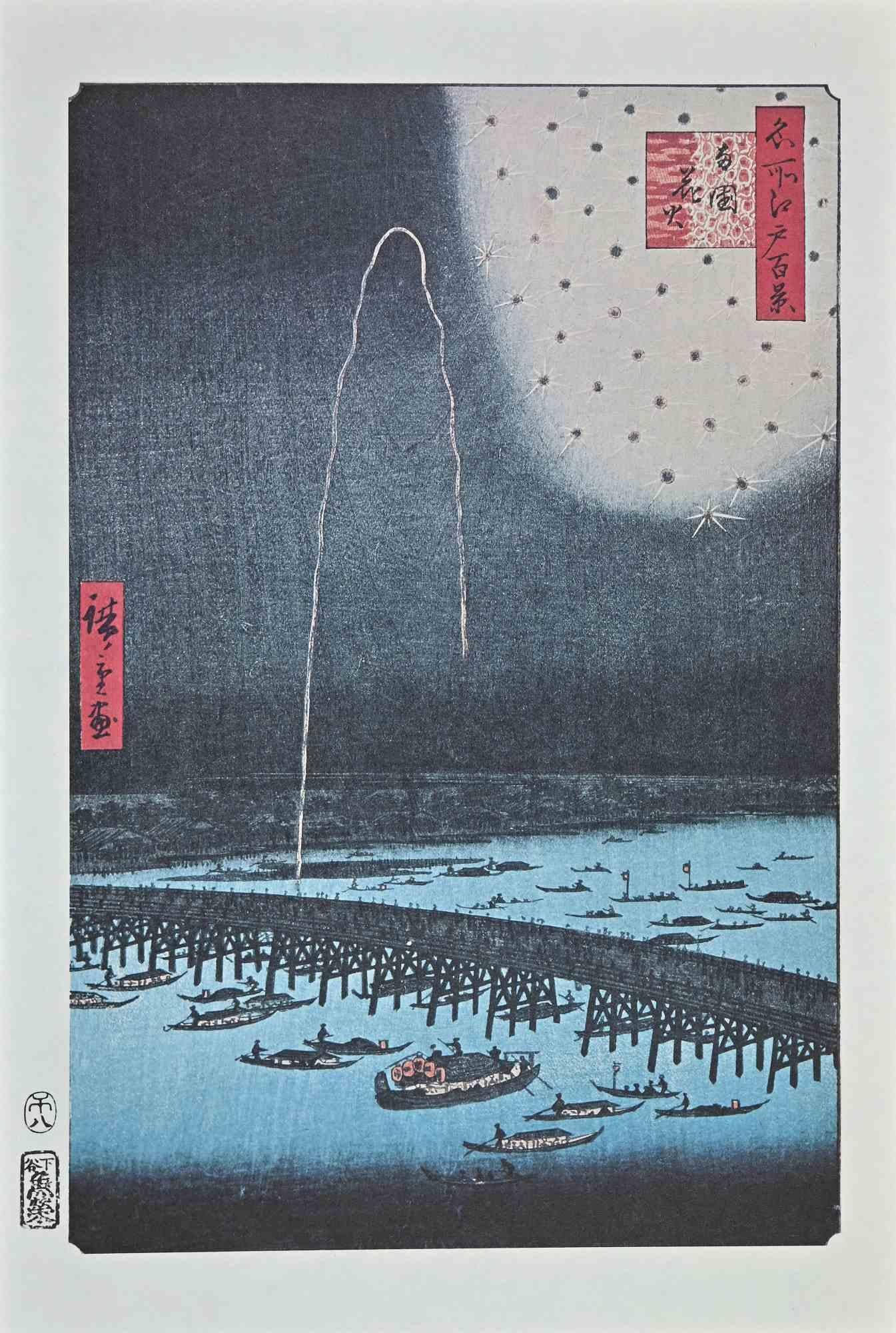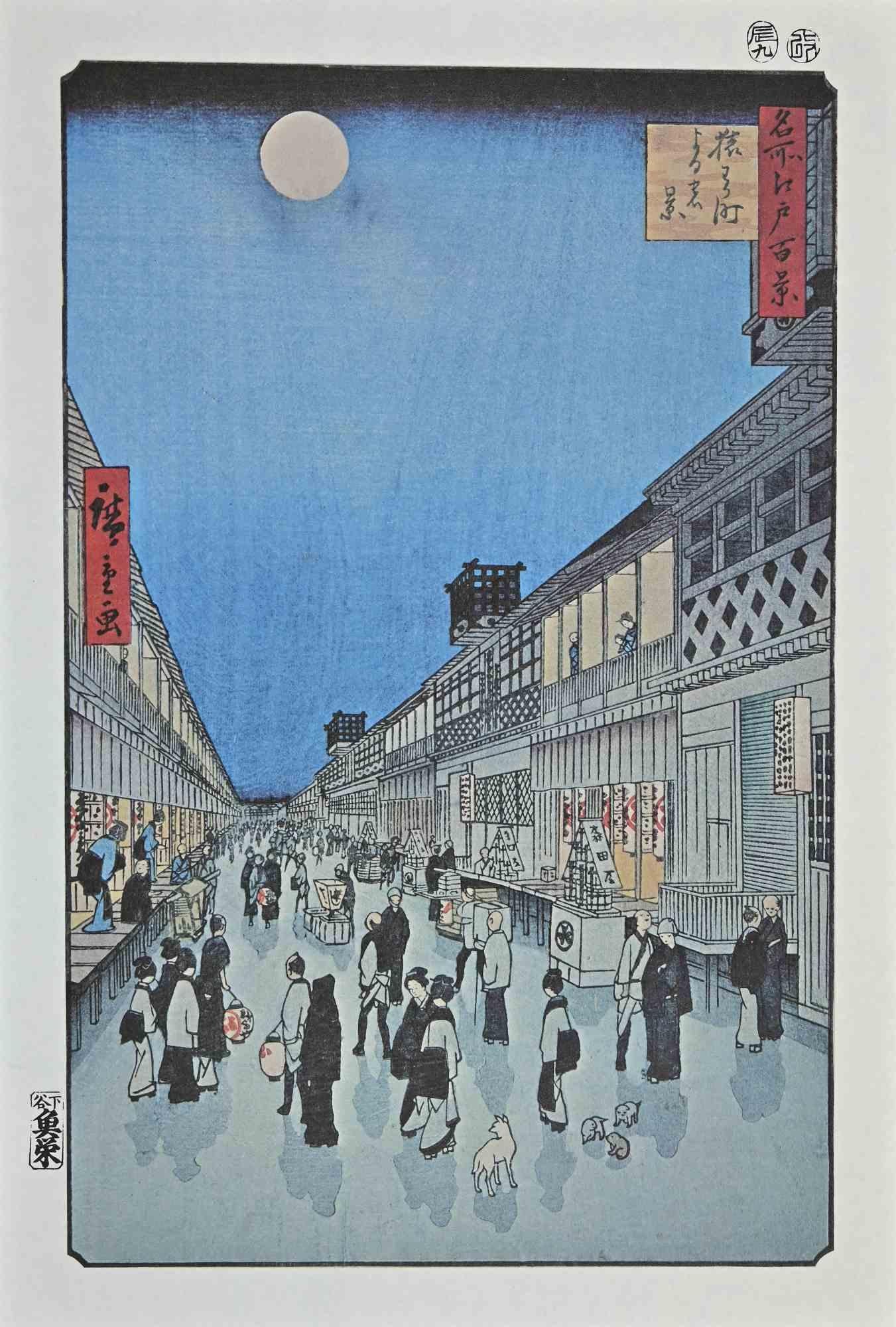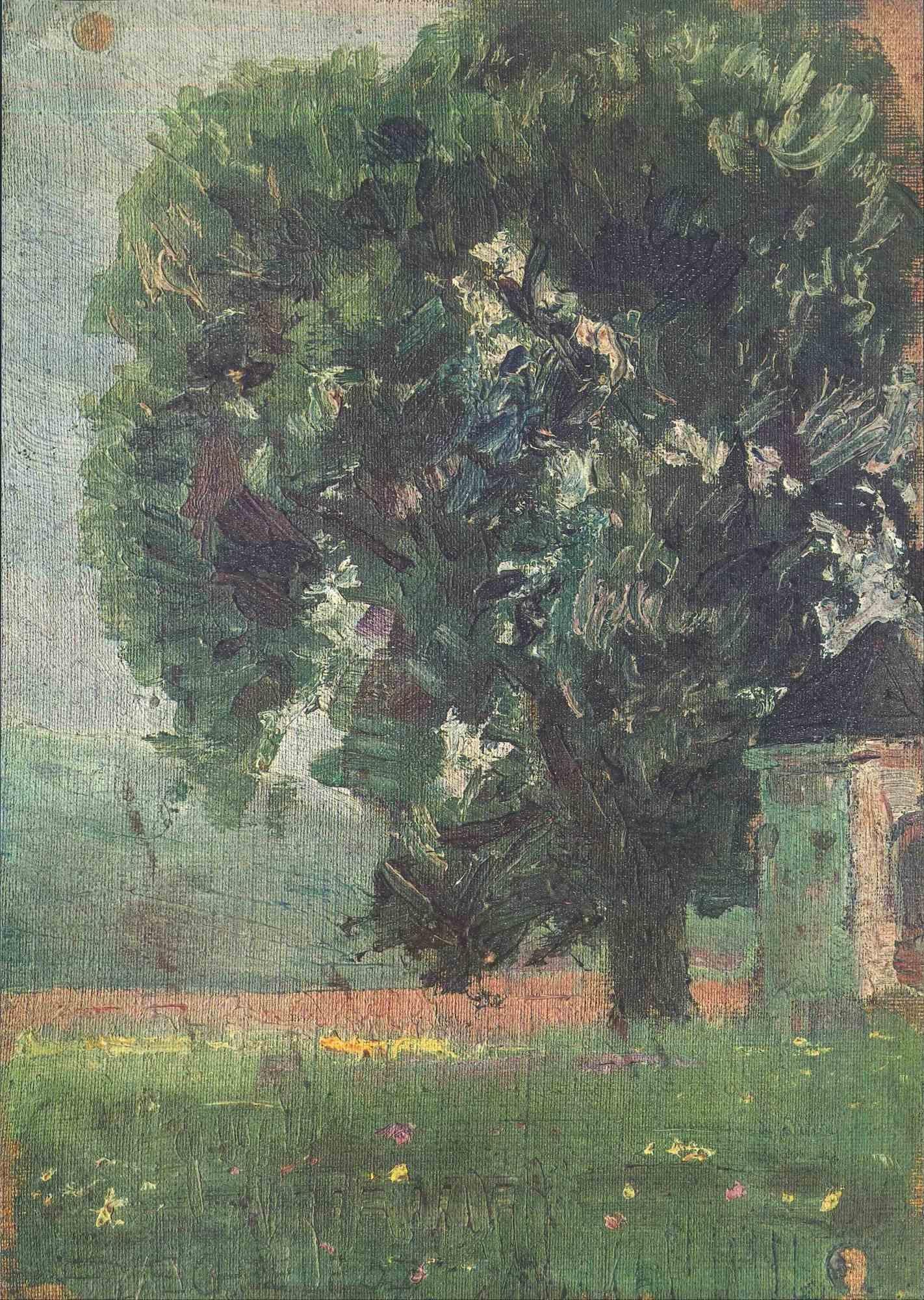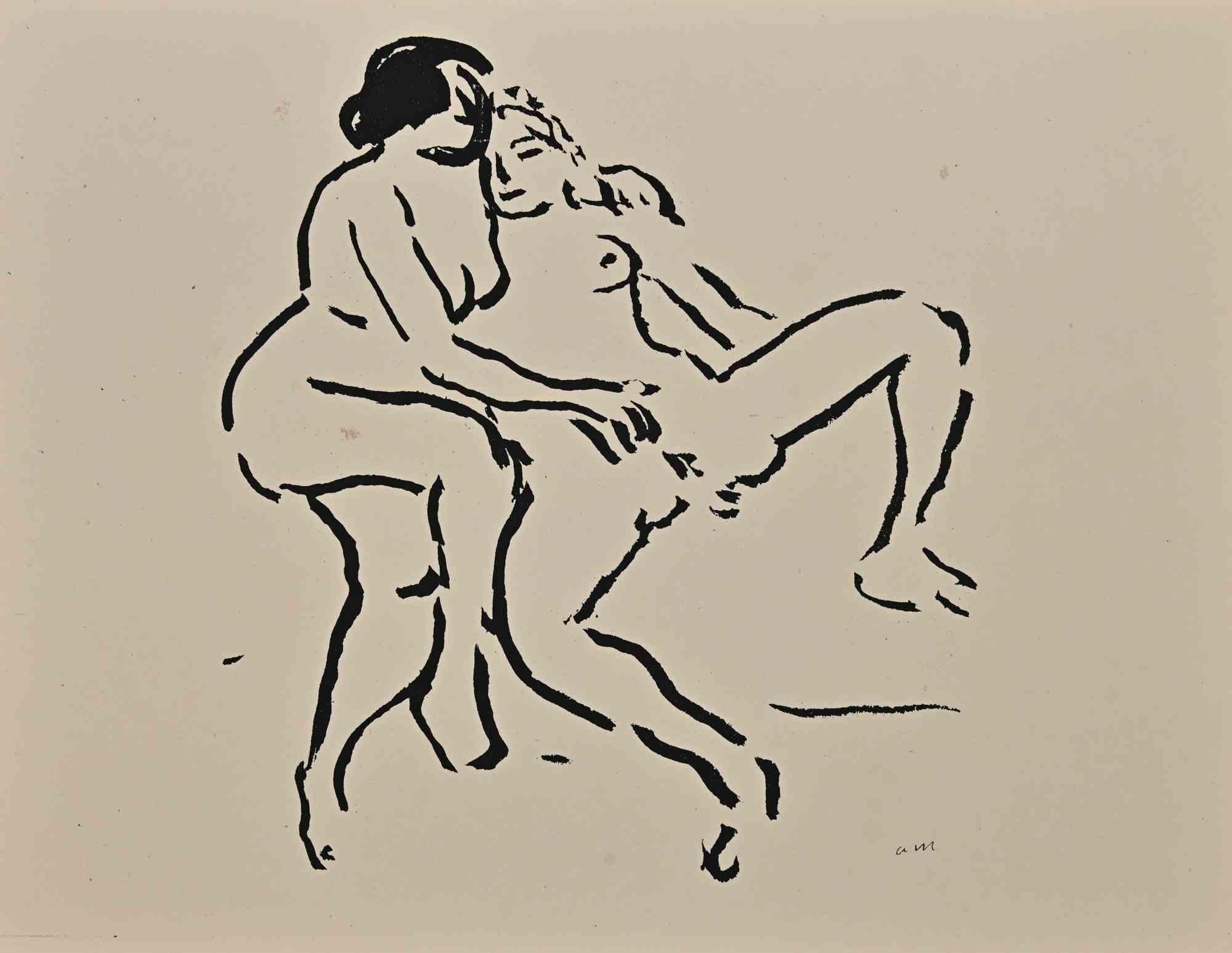Fernand LégerComposition, Cirque (Saphire 44-106), Fernand Leger1950
1950
About the Item
- Creator:Fernand Léger (1881-1955, French)
- Creation Year:1950
- Dimensions:Height: 16.63 in (42.25 cm)Width: 12.69 in (32.24 cm)
- Medium:
- Movement & Style:
- Period:
- Condition:
- Gallery Location:Auburn Hills, MI
- Reference Number:1stDibs: LU1465213985662
Fernand Léger
A painter as well as a filmmaker, illustrator, stage-set designer, ceramicist and printmaker, Fernand Léger was one of the most prolific artists of the first half of the 20th century. His early mature work as a Cubist was marked by the use of bold colors and contrasts and a visual vocabulary inspired by industrial technology. In his later career, Léger turned to idiomatic, almost naïve depictions of human figures, in a belief that his work should be accessible to ordinary people and relevant to their lives.
Born in Normandy, the son of a cattle trader, Léger worked as an architectural draftsman in Paris while studying art. By 1908 he was a member of an artistic circle that included Marc Chagall, Robert Delaunay, sculptor Jacques Lipchitz, and the poet Guillaume Appolinaire, and through them he became connected to the Cubists. As opposed to the flat planes and neutral hues seen in the paintings of Pablo Picasso and Georges Braque, Léger’s Cubist abstractions were devised with vivid colors and forms that had dimensionality. Soon after his army service in World War I — he was gassed at the Battle of Verdun — Léger entered his “mechanical” period. Convinced that technology would improve the human condition, he painted compositions of tubular shapes and cylinders that are reminiscent of machine parts. In other work, Léger sought to capture the bustle and brio of modern life with references to railroad stations, factories, street signs and billboards.
Léger had also emerged from the trenches with a deep concern to make his art engage the sorts of men and women he had met during the war. He sought to bring his work to a wider audience through film, theater sets and book illustrations. In the 1920s, influenced by Purism — a variant on Cubism that promoted a simpler and more direct approach to forms and compositions — Léger produced a series of paintings depicting everyday objects: a soda siphon, an accordion, a guitar and vase. The human figure returned to his work. By 1930, pure abstraction disappeared almost completely from Léger’s art in favor of simple studies of people. Their boldly outlined forms, placed against a bright background, can be regarded as an assemblage of parts — yet in these representations of dancers, acrobats and folks on bicycles, Léger seems to be articulating a kind of kinship and affection. You will see from the works on offer why Fernand Léger is often regarded as the warmest and most humane of the great modern artists.
Find a collection of original Fernand Léger art today on 1stDibs.
- ShippingRetrieving quote...Ships From: Clinton Township, MI
- Return PolicyA return for this item may be initiated within 1 day of delivery.
- Kollwitz, Mother and Child (after)By Käthe KollwitzLocated in Auburn Hills, MILithograph on vélin paper. Inscription: Unsigned and unnumbered, as issued. Good condition. Notes: From the folio, Kathe Kollwitz, Ten Lithographs. Published by Henry C. Kleemann and...Category
1940s Modern Landscape Prints
MaterialsLithograph
- Kollwitz, Death seizes the Children (after)By Käthe KollwitzLocated in Auburn Hills, MILithograph on vélin paper. Inscription: Unsigned and unnumbered, as issued. Good condition. Notes: From the folio, Kathe Kollwitz, Ten Lithographs. Published by Henry C. Kleemann and...Category
1940s Modern Landscape Prints
MaterialsLithograph
- Kollwitz, Brotherhood (after)By Käthe KollwitzLocated in Auburn Hills, MILithograph on vélin paper. Inscription: Unsigned and unnumbered, as issued. Good condition. Notes: From the folio, Kathe Kollwitz, Ten Lithographs. Published by Henry C. Kleemann and...Category
1940s Modern Landscape Prints
MaterialsLithograph
- Kollwitz, Call of Death (after)By Käthe KollwitzLocated in Auburn Hills, MILithograph on vélin paper. Inscription: Unsigned and unnumbered, as issued. Good condition. Notes: From the folio, Kathe Kollwitz, Ten Lithographs. Published by Henry C. Kleemann and...Category
1940s Modern Landscape Prints
MaterialsLithograph
- Composition, Cirque (Saphire 44-106), Fernand LegerBy Fernand LégerLocated in Auburn Hills, MIOriginal Limited Edition Lithograph on Arches paper. Edition: 300. Inscription: Unsigned and unnumbered, as issued. Excellent condition. Notes: From the volume, Cirque, Lithographies...Category
1950s Modern Landscape Prints
MaterialsLithograph
- Composition, Cirque (Saphire 44-106), Fernand LegerBy Fernand LégerLocated in Auburn Hills, MIOriginal Limited Edition Lithograph on vellum paper. Edition: 300. Inscription: Unsigned and unnumbered, as issued. Excellent condition. Notes: From the volume, Cirque, Lithographies...Category
1950s Modern Landscape Prints
MaterialsLithograph
- Ancient View of Chateau de Touars - Original Lithograph - 19th CenturyLocated in Roma, ITAncient View of Chateau de Touars is an original lithograph artwork realized by an Anonymous engraver of the 19th Century. Printed in the series of "France Pittoresque". Titled "...Category
19th Century Modern Figurative Prints
MaterialsLithograph
- Royal Palace in Genoa - Lithograph - 19th CenturyLocated in Roma, ITRoyal Palace in Genoa is a lithograph on paper realized in the 19th Century. The artwork is represented in a well-balanced composition with strong strokes. Very good condition.Category
19th Century Modern Figurative Prints
MaterialsLithograph
- Chicago - Lithograph on Paper from "Brockhaus Encyclopedia - 1905Located in Roma, ITChicago is an interesting black and white lithograph on paper, realized in 1905 by an anonymous artist, and published by Brockhaus Encyclopedia (Brockhaus Enzyklopädie), an encyclopedia in German among the most renowned in the world. Published in Mannheim by the publisher Bibliographisches Institut & F. A. Brockhaus AG, this encyclopedia appeared in an embryonic form in the 18th century. At the time it was a matter of offering a modern instrument of culture and conversation (Conversations-Lexikon mit vorzüglicher Rücksicht auf die gegenwärtigen Zeiten) to the educated classes. The real encyclopedia would soon be born from the project at the beginning of the 19th century. This original print is a toponomastic map of the Chicago city...Category
Early 1900s Modern Figurative Prints
MaterialsLithograph
- Plan de la Nouvelle Orléans - Original Lithograph - 1880Located in Roma, ITImage dimensions: 9.3 x 16 cm. Plan de la Nouvelle Orléans is an interesting black and white lithograph on paper, realized in 1880 by an anonymous artist. Original Title: Plan de l...Category
1880s Modern Figurative Prints
MaterialsLithograph
- The Queen's Staircase - Original Lithograph by F.A. Pernot - 1836Located in Roma, ITThe Queen's Staircase is an original modern artwork realized in 1836 by the French artist François Alexandre Pernot (1793-1865). Original Lithograph on paper. The sheet is glued on ...Category
1830s Modern Figurative Prints
MaterialsLithograph
- Scicli - Original Lithograph by Virgilio Guidi - 1970sBy Virgilio GuidiLocated in Roma, ITImage dimensions: 41 x 62 cm. Interesting colored litograph, representing a landscape of the Sicilian town of Scicli. Hand-signed and numbered with pencil on lower margin by the Italian artist, Virgilio Guidi. Edition of 148 prints. On the "Reisga" stationary paper...Category
1970s Modern Figurative Prints
MaterialsLithograph
